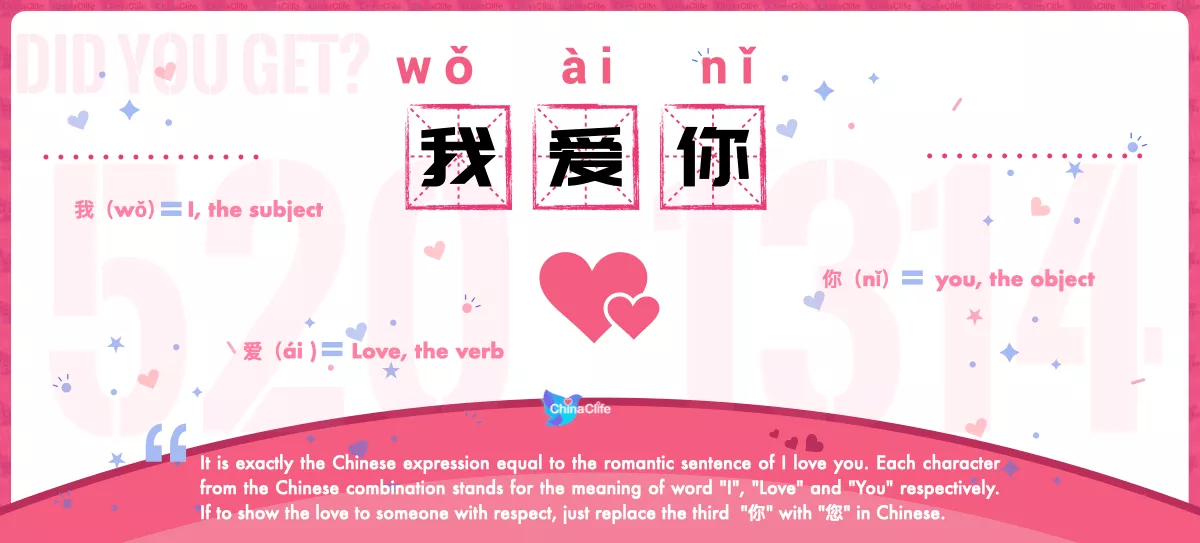Learn About I Love You in Chinese
This Chinese flashcard will tell you the most popular or commonly used Chinese word or short phrases with seconds. Here the Chinese word 我爱你 (wǒ ài nǐ), the largest Chinese characters and word focused on the top Chinese flashcard above, is one of the most popular romantic expressions to say I Love You in Chinese language.
Since it's exactly the Chinese expression for the romantic sentence of I love you, each character from the Chinese combination stands for the meaning of word "I", "Love" and "You" respectively. It's easy to get clues from the Chinese flashcard, that the phrase I-love-you in Chinese consists of three Chinese characters: the first character 我 (wǒ) is one of the common Chinese Personal Pronouns standing for I or me, while the last character 你 (nǐ) - also a Personal Pronoun in Chinese - refers to you in the Chinese language. And the middle one 爱 (ài) works as an core verb here which corresponds with the word of love in Chinese.
我(wǒ) = I, the subject.
爱(ái) = Love, here the verb and also the predicate.
你(nǐ) = You, the object.
There is another similar Chinese word 我爱您 (wǒ ài nín) which expresses the same meaning as 我爱你 with only difference between the third character 你 v.s. 您 in Chinese but is a much polite expression and better suggested to show love to someone you respect, such as the parents and elders.
What's more, there's also another modern romantic way for the Chinese to say I love you across the network and net cables. Many Chinese netizens prefer using the short numeral combination 520 as their love buzzword.
RECOMMENDED: To know more about the word I Love You in Chinese besides the flashcard content above, please go further reading on the bilingual story 520's Meaning v.s. I-Love-You in Chinese here.
Learn to Use I Love You in Chinese
Easy-to-learn Pinyin:
Cāi cāi wǒ yǒu duō me de xǐ huān nǐ ?
Standard Chinese Pinyin:
Cāi cāi wǒ yǒu duōmede xǐhuān nǐ ?
Easy-to-learn Pinyin:
Xiè xiè nǐ , qīn ài de , wǒ ài nǐ 。
Standard Chinese Pinyin:
Xièxiè nǐ , qīnàide , wǒ ài nǐ 。
Easy-to-learn Pinyin:
Shì jiè shàng zuì yáo yuǎn de jù lí bú shì shēng yǔ sǐ , ér shì wǒ zhàn zài nǐ miàn qián ér nǐ què bù zhī dào wǒ ài nǐ 。
Standard Chinese Pinyin:
Shìjiè shàng zuì yáoyuǎn de jùlí búshì shēng yǔ sǐ , érshì wǒ zhàn zài nǐ miànqián ér nǐ què bù zhīdào wǒ ài nǐ 。


